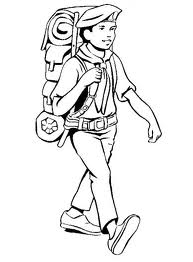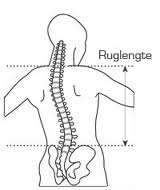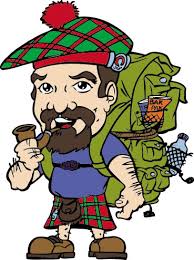|
|
| |
|
|
 If you are about to undertake a multi-day hike, you will have to be using a backpack. Depending on your goal, you will need to choose one.
(See chapter PSE - Personal Standard Equipment)
If you have a backpack you'll need to learn how to use it. Adjusting the backpack to your back and walk with it are specific disciplines.
If you are about to undertake a multi-day hike, you will have to be using a backpack. Depending on your goal, you will need to choose one.
(See chapter PSE - Personal Standard Equipment)
If you have a backpack you'll need to learn how to use it. Adjusting the backpack to your back and walk with it are specific disciplines. |
| |
|
Settings
|
 On most "better quality" backpacks the spinelength can be adjusted. If possible this is to be done in the following manner.
The hip belt should carry on the hip while the fixing points of the shoulder straps remain between the shoulders.
For children it may be necessary to adjust the backpack multiple times a year.
Packing a backpack:
In many books you will encounter rules that dictate wich articles to put where. A few simple guidelines:
On most "better quality" backpacks the spinelength can be adjusted. If possible this is to be done in the following manner.
The hip belt should carry on the hip while the fixing points of the shoulder straps remain between the shoulders.
For children it may be necessary to adjust the backpack multiple times a year.
Packing a backpack:
In many books you will encounter rules that dictate wich articles to put where. A few simple guidelines: |
| Push a trash bag in the partitioning of your backpack. (additional dam) |
| Sleeping Stuff at the bottom. This is not needed during the day. Compress it if possible with a compressionbag. |
| Make sure the heavy stuff remains as close as possible to your back, load them as low as possible. This prevents you from being top heavy. |
| Make sure your support area remains flat. There should be nothing poking into your back when walking. |
| Try to keep your backpack as thin as possible, rather load upward then away from yourself.
A backpack loaded in thickness gives much more momentum onto the spine. |
| Do not hang anything off your rucksack, if it does not fit bind it at tight as possible. Dangling elements are a bother. |
|
| |
|
Carry a backpack
|
 It looks so easy, backpack on your back and start walking. When you start with it, it's often disappointing. You have that heavy
thing on your back. Not even spoken about the lifting or the pain in shoulders, spine or hips. With this a few pointers:
It looks so easy, backpack on your back and start walking. When you start with it, it's often disappointing. You have that heavy
thing on your back. Not even spoken about the lifting or the pain in shoulders, spine or hips. With this a few pointers: |
| Buttons on jackets and trousers are pressure points when placed under a backpack. Remove any buttons and do not wear a belt. |
| Provide a couple of sanitary towels. An inexperienced hiker suffers from the shoulders. You can place them as an extra padding between
shoulder and backpack. |
| After tossing the bag onto your back. Fasten the backpack to your back. See adjustments. |
|
| |
|
Adjustments
|
| Loosen shoulder straps. Allso the straps form schoulder to top backpack. |
| Place bag on the back. |
| Fasten the waist band. This carries the backpack on the hips. |
| Pull the shoulder straps until it is fully connected to the back. The backpack should, during this action, not be lifted from the hips. |
| Now pull the top of the backpack with the straps to your upper neck |
| You should bear the padding everywhere on the body. When there is place between the padding and body
(usually the shoulders) you have done something wrong. Probably an incorrect setting on the back length. |
| Close the chest strap. The chest strap allows you, while walking, to adjust the pressure-points. |
|
|
|
|
|